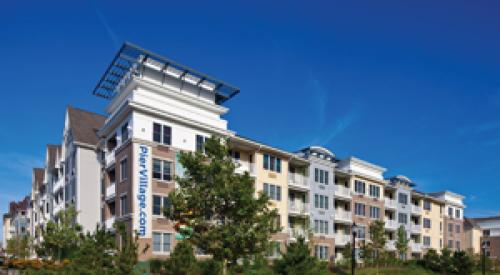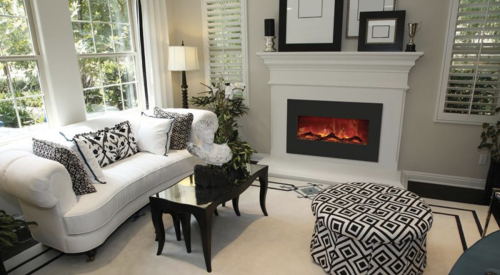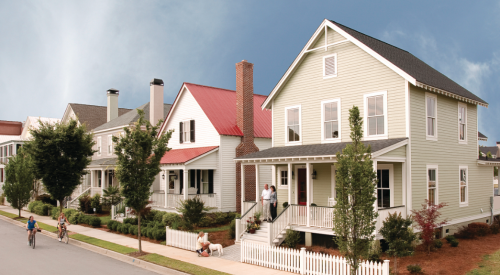|
Live/work projects have pull with home buyers: having a business within or attached to a home means they might save money on overhead and won't have to spend gas on a daily commute. And who wouldn't want the option to work in her pajamas if she felt like it?
Yet right now buyers looking for just this sort of arrangement really don't have a lot to choose from because the market is still small compared to the market for traditional homes. And if you are selling live/work, it doesn't mean you can sell just anything. A good product must meet home buyers' needs first.
Want to get your piece of this market? Here's a primer on the who, what, where, when, why and how of selling live/work.
What is Live/Work Housing?There are a variety of live/work setups to suit the needs and wants of a diverse group of buyers/business owners. Some are:
- A built-in space within a home customized and intended solely for business use. The structure might include a separate entrance and other means to separate the home and business that co-exist at the same address.
- A mixed-use project with retail space on the ground level for a business and access to living space that's either attached on the ground floor or upstairs. In the case of separate floors for retail and living space, the buyer might have two mortgages.
- A flex space within a home or perhaps an extra bedroom that can be used in several ways, including as a home business or office. If the owner discontinues the business, the room can become a bedroom, study, etc.
The live/work buyer typically:
- Is younger
- Has no kids
- Is stable but not too affluent
- Is creative
- Has a business already or is looking to start a sole proprietorship, service-oriented business as a graphic designer, writer, artist, accountant, attorney, therapist, real-estate agent, etc.
- Is a working professional who wants an option to telecommute
Nearly 21 million Americans were self-employed in 2006, the most recent year statistics are available from the U.S. Census Bureau. The vast majority of these businesses were sole proprietorships. And in this economy, more are likely to be added as some downsized workers decide to work for themselves.
Art Bettuzzi, a general manager of project sales, works for Chicago-based Marquette Companies, which developed Front Street Lofts, a community with live/work units. He points out that many traditional office spaces require a three- to five-year lease and notes that a large portion of new businesses fail. That's why a home buyer owning her own office space as part of her home — as opposed to holding a lease or mortgage separately — is a good candidate. "If somebody is going to take a risk entrepreneurially, wouldn't it be simpler to take that risk out of the equation?"
Also, "Entrepreneurs thrive on creativity and collaboration," says Tracy Koe Wick, director of client services at Southfield, Mich.-based Neumann/Smith Architecture. "A live/work space puts you in close proximity with other like-minded individuals in a close-knit community where entrepreneurs are neighbors and stakeholders controlling the success of their retail environment."
Where Do You Find These Buyers?"The best way to find those individuals is to network and market directly to chambers of commerce, entrepreneurial organizations and professional services groups," says Tracy Koe Wick, director of client services at Southfield, Mich.-based Neumann/Smith Architecture. "Once you know the types of businesses that work perfectly in these areas — people who don't need staff — I think direct marketing to those kinds of groups makes a lot of sense, and it's usually very affordable."
Wick is an advocate of using a search engine optimization/keywords ad campaign on the Web.
"If anyone is looking for live/work in L.A., Detroit or wherever your market is, your ad pops up and people go directly to your Web site," Wick explains. "These ads are very cost effective. That's the beautiful thing. We like target marketing."
When Do You Offer Your Live/Work Project for Sale?If you are selling live/work units as part of your overall community, when do you offer these units for sale? At the very beginning, the end or somewhere in the middle?
"You want the synergy of the neighborhood," says Eric C. Brown, president of Artisan Homes in Phoenix. He had 10 live/work units to sell as part of a 105-unit condominium complex he developed called Artisan Village in Phoenix. "We pushed our [release] to about the three-quarter mark of development. We didn't want them too early, and we wanted some time to market them."
He targeted a captive audience and showed them what the unts would look like before they were available. "People would be willing to wait if they wanted them, because they couldn't get them anywhere else," Brown says.
Live/Work Profile: Front Street Lofts, Lemont, Ill. |
The HOA declarations allow business to be conducted on the premises. There are separate entrances for clients and homeowners and a parking garage to accommodate the traffic from business patrons.
The target demographic is downtown Chicagoans who are already doing live/work and want to move to the suburbs. Potential or existing business owners who would like to stop renting space and work in or near the same building as their home are a target demographic as well.
All 82 units can be used as live/work, but Art Bettuzzi, general manager of project sales with Marquette Companies, the developer of Front Street, thinks the larger one-story as well as two-story floor plans best lend themselves to this arrangement. Owners can work in their business on the first floor, where their kitchen and living room is located, and keep the second floor for personal living space (bedroom, bathroom, etc.).
Live/Work Profile: Artisan Village, Phoenix
 |
"We knew exactly who were targeting," says Eric C. Brown, president of Artisan Homes, the developer of Artisan Village. "We thought the best way to reach them was through the art community, their friends and those who live in downtown already. At this price point, I knew I was going to attract ... younger people who don't have a lot to lose but have made enough money that they qualify for a house."
The HOA restricts the kind of businesses and certain uses of the space. "They could take the downstairs back bedroom to make it an office," says Brown. "But we had to have HOA restrictions so they couldn't fry foods in there.
The anchor is a bakery that bakes off-site," Brown adds. "The owner lives there, and she has her people bring the baked goods over in the morning. They probably do more dollars per square foot of any retail shop I know."
|












